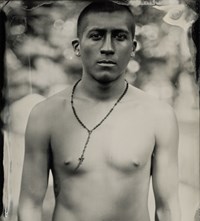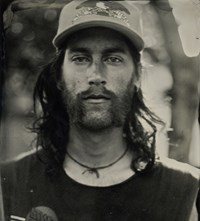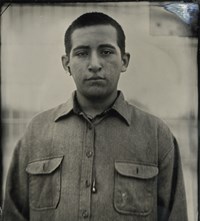Jenny Sampson presents a series of tintype portraits of skateboarders created using the wet plate collodion process
- TextAilidh Maclean
With seven years worth of imagery shot over multiple skate parks across the US, Jenny Sampson’s series captures a complex subculture using an equally complex process. To create the portraits in her new book Skaters: Tintype Portraits of West Coast Skateboarders, Sampson used the wet plate collodion process, which was invented in 1851 and knocked the Daguerrotype off the top of the photographic hierarchy. With a long exposure time, this technique requires sitters to remain still for an extended period to allow the photograph to develop – meaning that trick shots that comprise the majority of skate photography were out of the question. It did, however, allowed her to create series of portraits which have a depth that would have been difficult (or impossible) to achieve with a digital camera. Here, Sampson tells us more about her project and her affinity with skaters.
“In 1995, I used to ride my bike past a skatepark on my way to work. I thought of skateboarders as a rebellious crowd and I wanted to be part of their world, but I didn’t know how. Years later, I learned the wet plate collodion process to make tintypes and it ended up becoming my excuse to visit the skate park and photograph the people there. This behaviour – this rebelliousness – is what I craved when I was young. What I have come to realise as I watch skaters now, is that I still crave it. Perhaps I have it, too, rebelling against the status quo of digital photography. Perhaps wet plate collodion is my rebellious, non-conformist sport, my skateboarding.”
Skaters: Tintype Portraits of West Coast Skateboarders by Jenny Sampson, published by Daylight books, is available here.















